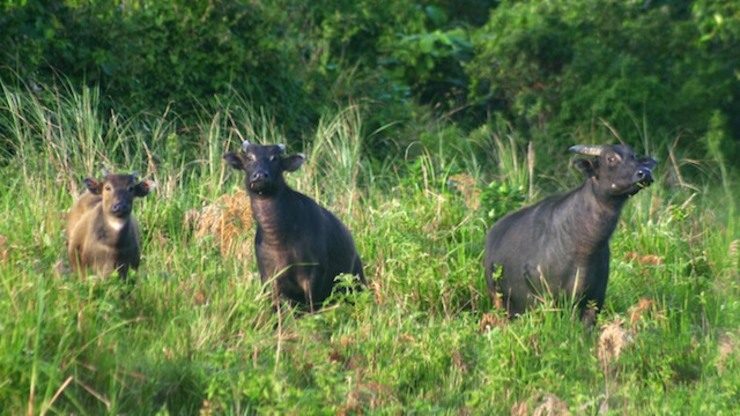SUMMARY
This is AI generated summarization, which may have errors. For context, always refer to the full article.

MANILA, Philippines – The tamaraw is making a comeback – and its not just in the collegiate basketball circuit.
The population of the tamaraw now stands at 382 – its highest population number since conservation efforts started – reflecting a 10% increase from last year, World Wide Fund for Nature (WWF) Philippines said Friday, October 10.
“We counted 382 heads during our annual survey last April – a big improvement from the 345 recorded in 2013, and the 327 we saw in 2012. We’re also seeing more juveniles – a sure sign that population recovery is underway,” said Rodel Boyles, head of the Tamaraw Conservation Programme.
This is a big improvement from a low of less than 100 back in 1969, and the WWF said the population growth can be attributed to strong conservation efforts under the Tamaraw Times Two project.
The tamaraw (Bubalis mindorensis), the country’s largest and rarest endemic land animal, can be identified by its V-shaped horns, shorter tail, and its chocolate to ebony-colored fur, as compared to its larger cousin, the carabao.
Tamaraws are only found in Mindoro, and can be seen roaming Mounts Iglit, Baco, Aruyan, Bongabong, Calavite, and Halcon.
Its population dropped from an estimated 10,000 in the early 1900s, to a low of less than 100 in 1969, due to logging, hunting, and an outbreak of disease in 1930.
Because of its status, it is protected against poaching by 4 laws, the WWF said: the Commonwealth Act 73 plus Republic Acts 1086, 7586 and 9147.
The Tamaraw Times Two project aims to double the animal’s population from 300 to 600 by 2020, and is a collaboration between the Department of Environment and Natural Resources (DENR), Tamaraw Conservation Programme (TCP), Far Eastern University (FEU), WWF, and Mindoro’s indigenous Tau Buid tribesfolk.
Aside from tamaraws, other animals have benefited from the conservation efforts on Mindoro’s parks. The WWF and TCP said they have captured new images of the Philippine brown deer (Cervus mariannus), Philippine warty pigs (Sus philippensis) and red jungle fowl (Gallus gallus).
“The Tamaraw Times Two project aims to revitalize much of Mindoro’s deforested mountain habitats, promoting a holistic ‘Ridge-to-Reef’ approach,” the WWF said. This, the group said, takes into consideration the proper management of mountains and watersheds, which in turn affects coasts and reef ecosystems.
The good news comes as the country marks Tamaraw Month this month. It is observed every October, and was first declared by the Philippine government in 2012. – Rappler.com
Add a comment
How does this make you feel?
There are no comments yet. Add your comment to start the conversation.